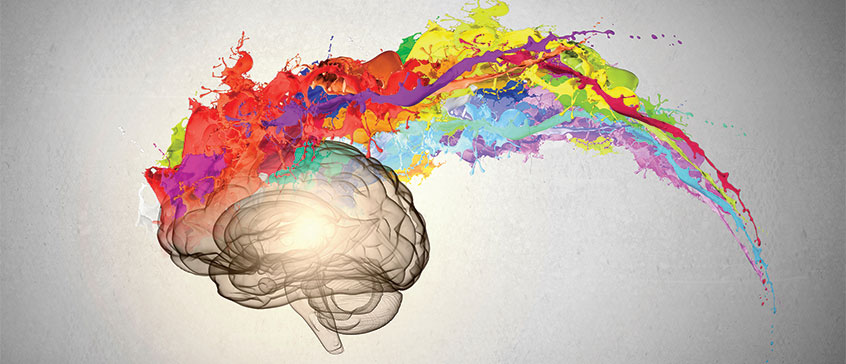Exploring the Diverse World of Artistic Expression: From Surrealism to Abstract Realism
In the world of artistic expression, from the dreamlike landscapes of surrealism to the intricate play of light and form in abstract realistic look, artists have actually continuously pressed the borders of creative thinking and creative imagination. As we discover the multifaceted globe of art, we are presented with a tapestry of styles, techniques, and viewpoints that challenge our understanding and prompt contemplation.
Surrealism: Letting Loose the Subconscious
Surrealism, a progressive imaginative motion of the 20th century, delved right into the depths of the subconscious, revealing a world of dream-like images and non-traditional juxtapositions. Spearheaded by musicians like Salvador Dali, René Magritte, and Joan Miró, Surrealism looked for to challenge the conventional ways of understanding and seeing art. Via strategies such as automatism and desire analysis, Surrealist musicians intended to use the subconscious mind to expose covert truths and desires.
Among the crucial elements of Surrealism was the focus on the illogical and the uncanny. By integrating unexpected aspects in their works, Surrealist musicians aimed to develop a feeling of disorientation and shock in the visitor. This interruption of reasoning and factor was indicated to prompt a deeper exploration of the subconscious and the enigmas of the human psyche.
Abstract Realistic Look: Redefining Understanding
Testing conventional artistic borders, Abstract Realistic look redefines perception with the combination of identifiable elements with abstract forms. This ingenious strategy to art integrates the representational precision of realistic look with the creative liberty of abstraction, providing audiences a special aesthetic experience that prompts them to examine their perception of truth.
In Abstract Realistic look, musicians aim to record the significance of their subjects while additionally infusing their work with a sense of deepness and intricacy with abstract aspects. By blending the familiar with the unfamiliar, these artists invite audiences to involve with their items on several degrees, urging them to check out the subtleties of type, shade, and texture.

Cubism: Breaking Up Truth
Using fragmented perspectives and geometric types, Cubism transformed the artistic depiction of fact in the very early 20th century. Developed by Pablo Picasso and Georges Braque, Cubism looked for to test standard notions of point of view and representation. By breaking down items and figures into geometric shapes and offering them from numerous perspectives at the same time, Cubist artists intended to capture the significance of the subject instead of its actual appearance. This approach not only deconstructed fact but additionally emphasized the flatness of the canvas, leading the way for future abstract art activities.

Cubism can be categorized into two primary phases: Analytical Cubism, characterized by single color pattern and elaborate, fragmented kinds; and Artificial Cubism, which included collage elements and brighter colors right into the compositions. Through these distinct stages, click Cubism influenced not only paint however likewise design, sculpture, and layout. trump art. Its influence YOURURL.com resounded throughout the art world, inspiring musicians to explore brand-new methods of standing for the world and interpreting around them
Expressionism: Emotions on Canvas
Checking out the depths of human feelings through vivid and meaningful brushstrokes, Expressionism became a profound imaginative movement in the very early 20th century. Unlike previous art motions that concentrated on showing the outside globe, Expressionism looked into the interior realm of the musician's psyche, intending to evoke raw emotions and prompt visceral feedbacks from customers.
Expressionist artists, such as Edvard Munch, Egon Schiele, and Emil Nolde, turned down conventional ideas of charm and realistic look in favor of misshaping form and color to share subjective feelings. Making use of exaggerated brushwork, strong shades, and distorted numbers helped produce a feeling of unease, alienation, or enthusiasm in their works.
One of one of the most well-known instances of Expressionism is Munch's "The Scream," which captures the extreme anxiousness and anguish of modern-day life through its swirling, distorted number versus a blood-red sky. With their psychologically charged works, Expressionist musicians looked for to challenge traditional artistic norms and give a window right into the turbulent midsts of the human soul.
Contemporary Art: Evolving Point Of Views

One of the specifying characteristics of modern art is its consistent development and capacity to adapt to transforming cultural landscapes. Artists are progressively incorporating modern technology into their method, blurring the lines in between the digital and physical realms. This combination of tools permits for innovative ways of storytelling and involving with target markets in an extra interactive manner.
In addition, modern art frequently functions as a system for social discourse, resolving pushing issues such as identification, politics, and the environment. Artists are utilizing their job to provoke and trigger important conversations thought, shedding light on the intricacies of the world we live in. As point of views continue to evolve, modern art stays a significant and vibrant pressure in forming our social landscape.
Final Thought
To conclude, the world of imaginative expression encompasses a vast range of styles and motions, each with its very own one-of-a-kind strategy to sharing significance and emotion. From surrealism's expedition of the subconscious to abstract realistic look's redefining of understanding, and from cubism's fragmentation of reality to expressionism's representation of emotions, art remains to advance and test point of views - trump art. Contemporary art reflects the ever-changing globe we reside in, providing new means to translate and recognize the complexities of our reality
As we discover the diverse world of art, we are offered with a tapestry of styles, techniques, and philosophies that test our understanding and provoke reflection. Its effect reverberated throughout the art world, motivating musicians to check out brand-new methods of representing the world and analyzing around them.
